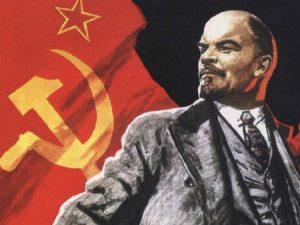The Bolsheviks (often referred to colloquially as “the reds”) became a major political organization in 1905 under the leadership of Lenin and Alexander Bogdanov. They played a smaller role in the 1905 Revolution, which consisted primarily of worker strikes, peasant unrest, and military mutinies. The 1917 revolution was a response to the loss of life during World War I, orchestrated by Tsar Nicholas II’s drafting of thousands of Russian men – particularly peasants. The 1905 Revolution focused more on issues of labor, of nationality and particularly religious difference, and was the result of growing unrest within the nation.

Source: https://www.fairfield.edu/news/archive/2018/february/meaning-and-legacy-of-the-russian-revolution.html
In November 1917, Bolshevik leader Vladimir Lenin led his group of leftist revolutionaries against the provisional Russian government, which had been established after Tsar Nicholas II was overthrown from the monarchy in February 1917. Although it is often referred to as “Red October” or the “October Uprising”, the events actually occurred during November according to the Gregorian Calendar. Regardless, the Bolshevik uprising was only one small part of the great Russian Revolution, and the Bolsheviks were just one party within the larger movement who were the most visible and instrumental in organizing others.
In November 1917, after the successful capture of the Winter Palace in November 1917 as well as the successful occupation of multiple government buildings, elections were held on November 12, 1917. Despite their instrumental role in the revolution, the Bolsheviks only won 175 seats in the 715-seat legislative body, coming in second to the Socialist Revolutionary Party.
Despite the revolution’s success in overthrowing the provisional government, it was not universally accepted by all Russians. Following the 1917 revolution, Russia was thrown into a civil war from 1917 to 1922 among the “Reds” (Bolsheviks), the “Whites” (counter-revolutionaries), the independence movements and the non-Bolshevik socialists. After the Civil War, the Bolsheviks renamed themselves as the Communist Party, paving the way for the establishment of a new union. In 1922, the Soviet Union was established, with Lenin as the head of government. Lenin died in 1924 after a series of strokes, and his body remains on display to this day. In a way, the Russian Revolution paved the way for the establishment of the Soviet Union, and completely reshaped the world.
One blog post is not sufficient to capture the complexity of the Russian Revolution and the establishment of the Soviet Union after. So, for this week’s bi-weekly roundup, we put together some resources about Russian history.
Resources
The Joseph A. Labadie Collection – accessible through SiRO
The Modernist Journals Project – accesible through SiRO
History of Russia: Primary Documents
1917: Digital Resources on the Russian Revolution